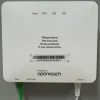TOTSCo Target Launch of UK Biz Broadband ISP Switching for Early 2026

The One Touch Switching Company (TOTSCo), which is the industry-led company responsible for helping to implement Ofcom’s solution (One Touch Switching) for easier and quicker UK consumer switching between broadband and phone providers, has this afternoon revealed that they’re aiming to go live with a switching solution for businesses in “early 2026“.
Just to recap. The current consumer focused OTS system is a Gaining Provider Led (GPL) process, where the customer contacts their new (“gaining“) ISP to start and manage the process on their behalf. But the new process is, technically, only a requirement for residential customers.
The UK telecoms regulator, Ofcom, has previously stated that this is because “business and residential customers can sometimes have different needs when switching and that there is diversity among business which means it may not be appropriate to specify certain rules that would apply to all business customers in the same way as to residential customers.”
Advertisement
However, business providers are still required to follow most of the same OTS rules (i.e. Ofcom simply have not specified what the process should be for such ISPs) and so, in practice, TOTSCo recognises that many business ISPs may see a benefit in using their platform to deliver a switching solution. But to be clear, there is no requirement for any ISP or Managed Access Provider (MAP) to use TOTSCo’s own business switching solution (once it exists) and business switching is considered a competitive market.
Nevertheless, TOTSCo has spent a good few months developing a switching solution for businesses, which is occurring alongside the separate Gaining Provider Led Business (GPLB) Switching Industry Process (here). The latest official blog post from TOTSCo’s CEO has provided a useful update on this and the planned timetable.
Paul Bradbury, CEO of TOTSCo, said:
We’re aiming to publish the price list for the TOTSCo Business Switching Solution in early May, with connection testing available from the end of May. We’ll be sharing details soon on how you can sign up to take part.
Our planning is currently focused on a go-live in early 2026, and we’re working closely with industry to make sure the solution is robust, practical, and ready to scale.
Resources to Support Your Planning
For those starting to prepare:
- The TOTSCo GPL Business Switching API Specification (beta version) is available here.
- The GPL Business Switching Industry Process, created by the GPL Business Steering Group (GPLB SG), is available here.
- Additional documentation, including the message specification, is expected soon from the GPLB SG.
In addition, on the consumer side of things, Paul stated that TOTSCo deployed a system upgrade over the Easter Weekend, which aims to “further strengthen overall performance and give us added confidence that we’ll continue to meet system SLAs“. As it stands, a total of 920,000 switches have now been successfully completed since the system launched in Sept 2024 (up from 673,000 in mid-March 2025) and 324 brands (e.g. broadband ISPs) are now live in their directory (up from 317).
However, some smaller ISPs have yet to go fully live on the switching platform, which makes it difficult for related consumers to switch providers. Ofcom has yet to take any enforcement action against such providers, which may partly be in recognition of the fact that the new switching system still has a few bugs and issues to tackle.
Advertisement
Mark is a professional technology writer, IT consultant and computer engineer from Dorset (England), he also founded ISPreview in 1999 and enjoys analysing the latest telecoms and broadband developments. Find me on X (Twitter), Mastodon, Facebook, BlueSky, Threads.net and Linkedin.
« Support Staff Hint Sky Broadband UK to Replace WiFi Max Kit Next Month























































Comments are closed